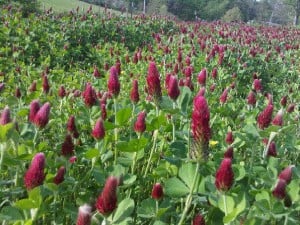At a Gardening 101 workshop on Saturday, one of the topics was green manures, which are an excellent way to smother weeds, build organic matter, recover deeply leached nutrients and contribute to biodiversity in the garden.
Green manures differ from cover crops in that the latter is primarily planted to reduce erosion while the soil might otherwise be bare. Green manures, in contrast, are meant to be cultivated into the soil, ideally before they’re in full flower. Because of their deep root systems, the leaves will be full of nutrients that have been recovered from a couple feet or more below the surface.
Buckwheat is a good summer green manure. Our gardeners were encouraged to keep a bag of buckwheat nearby, and if they see any bare ground in July, consider seeding it – even in the balks. In addition to the soil benefits, buckwheat is a fine nectar source for honey bees. Normally, you’ll only find the bees working buckwheat in the mornings, as the blooms tend to close as the day gets hotter.
Fall sown green manures discussed were crimson clover (an especially good attention-getter), hairy vetch and rye. These all work well in mixtures, too.



Leave A Comment